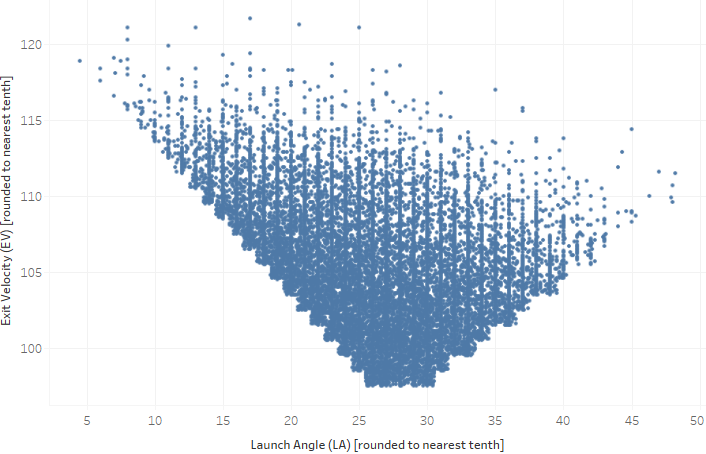This is the second article of my series – wPDI vs. CSW. For those new to either metric, I will quickly catch you up. [The opening article can be found here.]
In last year’s FSWA Research Article of the Year, CSW Rate: An Intro to an Important New Metric, Alex Fast of PitcherList examines his site’s pitching statistic, CSW. The short and simple formula for CSW is defined as follows:
Called Strikes + Whiffs
Total Pitches
Independently, I came up with the concept of Weighted Plate Discipline Index (wPDI). With wPDI, we ask just three questions, or three binary events for every pitch:
- Was the ball thrown in the strike zone?
- Was the ball swung on?
- Did the batter make contact with the ball?
Every pitch can then be classified into 6 possible pitching outcomes based on the above. The definition of each outcome is as follows:
wPDI: Classifying the 6 Pitching Outcomes
|
Outcome |
Outcome |
Outcome |
Outcome |
Outcome |
Outcome |
| Zone? |
Out of Zone |
Out of Zone |
Out of Zone |
In Zone |
In Zone |
In Zone |
| Swing? |
Swung On |
Swung On |
No Swing |
Swung On |
Swung On |
No Swing |
| Contact? |
No Contact |
Contact Made |
No Swing |
No Contact |
Contact Made |
No Swing |
Each outcome is then assigned a weight, or an index. The formula for wPDI, the Weighted Plate Discipline Index is then given as:
wPDI = IndexA * A% + IndexB * B% + IndexC * C% + IndexD * D% + IndexE * E% + IndexF * F%
A% through F% are the percent of pitches thrown in each outcome, and the indexes are linear multipliers to obtain the aggregated, sortable metric.
What CSW has most in common with wPDI, is that it shares the same denominator – Total Pitches. That being the case, we can attempt to use the wPDI framework to express the PitcherList metric. CSW is rooted in Baseball Savant data, while wPDI is fed by FanGraphs figures. By exploring the similarities and differences between the metrics, we can also uncover some great nuggets of understanding.
Read the rest of this entry »

